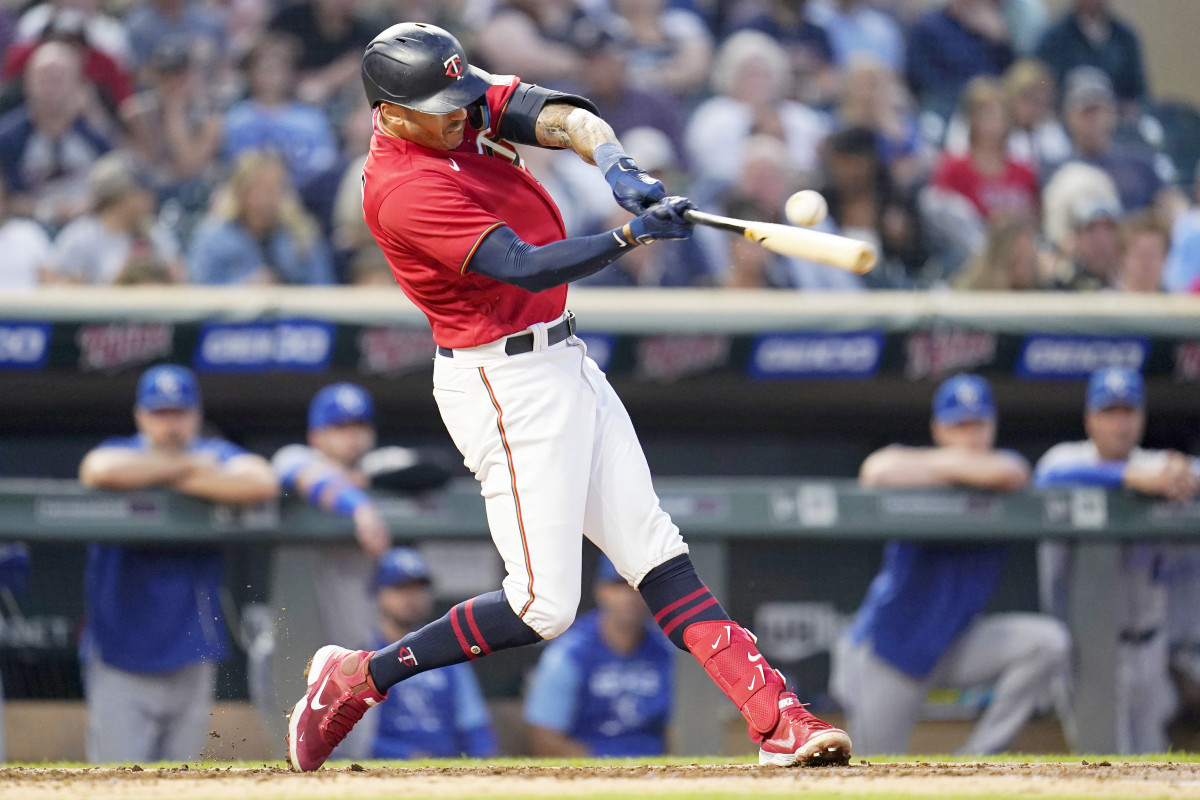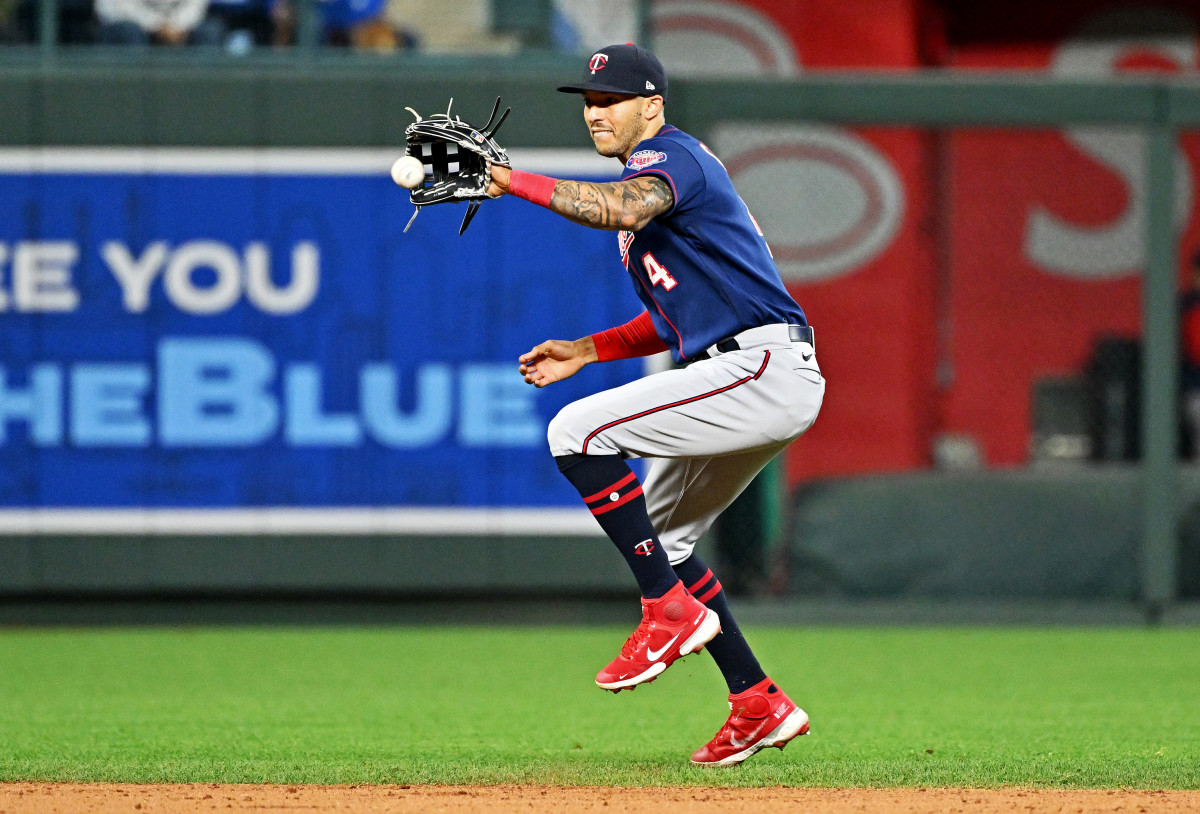Inside Carlos Correa’s Chaotic Flip From the Giants to the Mets
Having arrived the previous day, Carlos Correa woke up in San Francisco on Tuesday and dressed to impress for his 11 a.m. Pacific introductory news conference as the new shortstop of the Giants. The news conference never happened. By late in the evening, Correa was the third baseman for the Mets.

What happened in between will go down as the biggest undoing of a contract agreement in baseball and the moment Mets owner Steve Cohen officially became the most influential owner in the sport—He is playing by his own financial rules.
Scott Boras, the agent for Correa, says the Giants, after an initial conversation Monday, told him Tuesday morning they had “concerns” regarding their review of Correa’s medical information. He says those concerns were not about Correa’s back. In 2019, Correa played in only 75 games while suffering from a lower back injury. He has played in 89% of his teams’ games since. Boras says the club identified “something in his history that for whatever reason gave them doubts” about signing off on the 13-year, $350 million agreement with Correa.
“It is not something that is a current issue,” Boras says. “It clearly is not something that has to do with his functionality. He’s played eight years in the major leagues. They asked for more time for their medical people to review. We agreed.”
A team and a free agent typically begin the endgame to negotiations with a letter of agreement in which the terms of the contract are defined. The letter ends negotiations with other teams and binds the player to the club pending a physical. The letter typically states that the deal can be broken only by “the sole discretion of the club.”
In agreeing to giving the Giants more time for a medical review, Boras says he asked the Giants to decide by around 1 or 1:30 p.m. local time. He says he told the club, “If you are not prepared to execute the letter of agreement by then, let us know because we then will need to engage with other teams.”
“They said, ‘Fine,’” Boras says.
By about 1 p.m. Pacific, the Giants informed Boras they were not prepared to execute the letter of agreement, effectively putting Correa back on the free agent market. Boras began contacting other clubs about Correa’s availability. He says he spent “four or five hours” negotiating with Cohen, who was enjoying dinner and a martini in Hawai’i. Boras asked Cohen, “Do you have three olives for a third baseman?” The two of them briefly had discussed Correa just before Correa reached agreement with the Giants, though Boras says they did not exchange terms then. This time they agreed on a 12-year, $315 million deal. It was 3:15 a.m. Wednesday in New York when they closed the deal.
Cohen has signed nine free agents this winter at a cost of $806 million. According to Baseball Prospectus, the Mets’ payroll for 2023 is $384.3 million, which incurs a luxury tax hit of $111.6 million. Cohen will pay more in taxes next season than seven teams are paying in payroll.
The luxury tax system began in 1997 as an unofficial braking mechanism against runaway team spending. Teams could spend as much as they wanted, but the three-tiered tax was designed to affix a cost to outlier spending. The CBA signed last March added a fourth tier—for repeat offenders, a 90% tax on payrolls greater than $293 million—that immediately became known as the “Cohen Tax” threshold because he was viewed as the only owner to which it might apply. Cohen has obliterated that threshold without worry. Correa, for instance, will cost him $49.87 million in 2023 with the 90% tax.
Cohen will pay more in 2023 taxes than what every club except the Yankees and Dodgers has spent in the 25-year history of the tax. (Tax bills annually go out Dec. 2 and are paid by Jan. 21.) Six teams paid a tax last season. After a $13 million cost toward player benefits, 50% of the collected tax is distributed evenly to the non-tax paying teams. Based on spending patterns of this year, Cohen effectively is writing a $2.31 million check to two dozen of his competitors: $55.5 million in his tax money going to 24 teams.
Until now, Cohen effectively was signing players to retain them (Brandon Nimmo and Edwin Díaz) or to replace the ones he lost (Justin Verlander for Jacob deGrom, Kodai Senga and José Quintana for Chris Bassitt and Taijuan Walker). The agreement with Correa, 28, gives the Mets a huge finishing piece: an impact bat, a premier defender, one of the league’s best hitters against velocity (.360 vs. 95+ MPH, fourth best in MLB) and a historically accomplished postseason hitter (.849 OPS, second among active players, and 2.7 Win Probability Added, second all-time to David Ortiz).
“He’s a shortstop who always was going to go to third base at some point,” Boras says. “He’s going to a club with a chance to win now and he’s a player who always has loved the vibe of New York City and playing in New York City.”

Cohen has given baseball its greatest financial Goliath yet—and that is dispiriting to a fellow NL East team like the Marlins but is good for the game overall. Given how far afield they are of any other team, the Mets’ season can end in only two ways: a World Series championship or a failure. In either case, they inspire passion and interest. Boras compared it to the model of European soccer: “Goliaths with stars against underdogs.”
Says Boras, referring to the $2.4 billion Cohen paid for the team two years ago, “I think Steve paid a grossly discounted value for a team in New York City with a new ballpark and those resources. The thing he didn’t have is the player development system in place. I told him then, ‘You’re going to have to sign free agents for the first four or five years if you want to build a championship team.’”
This month marks 46 years since Yankees owner George Steinbrenner signed Reggie Jackson in what was the first market of full free agency. That signing happened a few weeks after Steinbrenner signed free agent pitcher Don Gullett. The Yankees won the World Series the next two years. In competing against the Expos and Padres for Jackson, Steinbrenner admitted he was leveraging his advantage of being in New York.
“The greatest thing I had going for me was New York,” said Steinbrenner, who then referenced his competitors’ businesses. “[Edgar] Bronfman can have his liquor in Montreal. [Ray] Kroc can have his hamburgers in San Diego.”
Cohen has the biggest market, the most personal wealth among baseball owners and, at age 66 who grew up a fan of the team, a personal passion to end a 36-year World Series drought.
“He looks at millions,” says one rival executive, “the way others look at dollars.”
